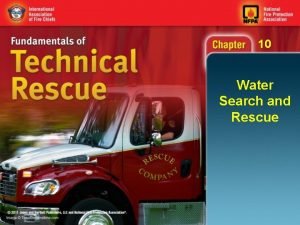Autonomous Search and Rescue Look Ma No Odometer

- Slides: 1

Autonomous Search and Rescue: Look Ma, No Odometer! Lorin Beer Angelina Fabbro Angelica Lim Kate Tsoukalas Nexus 6 Undergraduate Robotics Team, Simon Fraser University, Canada A Proportional Controller V 1 V 2 New , θ n tio 1. Reactive Potential Field Strategy 2. Proportional Control for Angular Movement 3. Curiosity Inspired Behavior Modeling rec Our solution is composed of the following: Di Our robot’s goal is to efficiently search for, find, and visit survivors in an uncharted world. Once Caprica has identified a survivor, it closes to within a predefined distance and calls for help. The visit is signaled by listing the arrangement of the colors as well as by an acoustic signal akin to calling for help in a real world scenario. w Strategy Ne Introduction Caprica Reactive Potential Field Assumptions Dire ction , θ Caprica V 2 > V 1 Figure 3. The larger the corrective angle, the faster the robot will change course. 1) The robot is composed of a Roomba i. Create and mini-ITX computer, with a laser and camera as peripherals. 2) Survivors are represented by cylinders with three distinct colours. 3) Each survivor has a unique colour permutation. 4) The maximum number of survivors present in the world is six. 5) Obstacles are at least 15 cm in height. Our robot navigates towards open spaces based on curiosity level. Linksys Wireless Bridge Caprica Curiosity level is determined by the amount of recent stimuli provided by Caprica’s sensors (specifically the blobfinder). If a predetermined period of time has elapsed during which the sensors report no new survivors, the curiosity level is elevated and the robot seeks new areas to explore. Curiousity level is reset once a new survivor is encountered. Hokuyo Urg Laser Mini-itx VIA Epia-M Motherboard 256 MB RAM 4 GB CF Card The curiosity threshold model that our solution uses is based on the simple idea of ‘getting bored’. The robot will ‘become bored’ if after a certain period of time it has explored the same environment repeatedly without encountering new survivors. In this case, we say that the robot’s curiosity level increases and alternate behavior is implemented to explore the world in greater detail. Curiosity Level 1: Robot has a preference for large open space or farthest wall. Robot switches to Level 2 if a period of time elapses when no new survivors are found. Curiosity Level 2: Robot has a preference for spaces identified as smaller than the open space algorithm would prefer. Robot does not revert to Level 1 until a new survivor has been found or a prespecified time period has elapsed. Fiducial How We Explore Hardware Platform Modeling Curiosity Collision Avoidance and Recovery Due to the Potential Field Strategy, Caprica usually avoids objects. However, Caprica occasionally either gets too close to obstacles or collides with them. In case a), Caprica lowers its speed. This allows the controller enough time to execute a turn to avoid the obstacle. In case b), Caprica halts. And executes a turn until enough open space is available to allow movement forward. Logitech Quickcam Express Webcam i. Robot Create pri Ca Figure 1. Photograph of our hardware configuration. ca How We Recognize Survivors Figure 2. Reactive field potential. Black arrows show repulsive vectors, while the red arrows show the attractive vectors. Exploration is interrupted upon survivor recognition. If three colors stacked vertically with a unique permutation are identified by the camera, the robot switches into rescue mode and proceeds to visit and broadcasts the identity of the survivor. Krogh, BH. “A Generalized Potential Field Approach to Obstacle Avoidance” Control Robotics International of SME (1984) Rivera, DE. , Morari M. , Skogestad, S. “PID controller design” Industrial and Engineering Chemistry Process Design (1986) If more than one configuration of three vertical blobs are detected simultaneously, we group these by their x-coordinate to identify multiple survivors, then proceed towards the closest first. A notable feature of our solution is that it does not incorporate odometrical sensor data. The robot relies solely on data obtained from the laser range finder and the color blobs identified from the camera. How We Depart Survivors Simon Fraser University Literature cited Once Caprica has reported the survivor's identification and given the acoustic signal the robot will rotate until the laser reports a clear path. The robot then reverts to exploration mode and continues searching for survivors. Acknowledgments We would like to thank Richard Vaughan for his helpful advice, equipment loans, workspace, and time in helping us prepare for this competition. We would also like to our friends and families for putting up with our absences in the long hours we spent away from home in the robotics workspace. For further information Please contact kjtsouka@gmail. com or alimb@sfu. ca. More information on this and related projects can be obtained at http: //wiki. sfu-cs-robotics. info/Main_Page .

